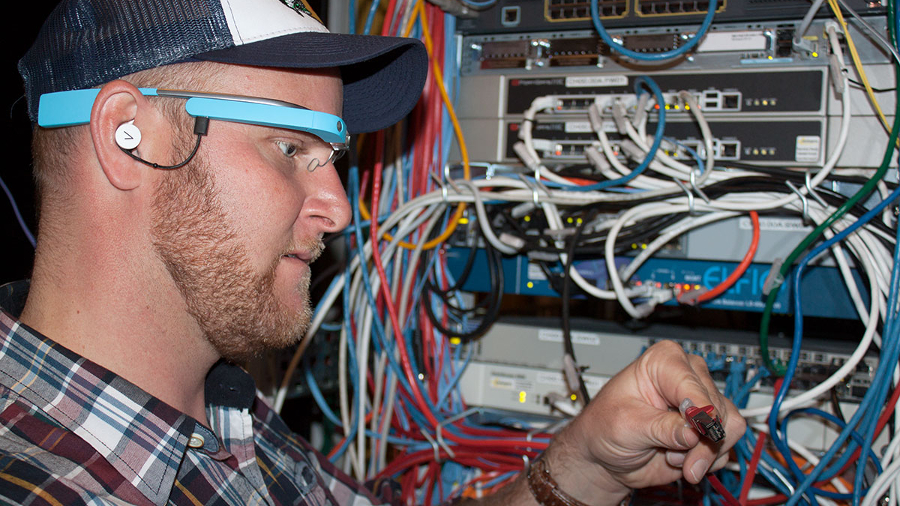Eyeing up Google Glass: a wish list for wearable glasses that work in the field
The major improvements Google Glass needs

No other wearable tech device has captured as many headlines as Google Glass, the internet-enabled spectacles from web search giant Google. Early adopters have been undeterred by the hefty price tag of £1,000 ($1,500 in the US), or the fact that Glass is still in beta.
But while consumer reaction to Glass has been mixed – with privacy cited as the biggest issue – Glass' trials and experiments in the workplace have shown far more promise.
Potential of Glass
Indeed, realising Glass' workplace potential, Google launched Glass at Work in April, to encourage developers to create enterprise apps. They also cited a number of trials that have taken place. At Beth Israel Deaconess Medical Centre in Boston, Massachusetts, doctors used Glass to access hands-free medical records of patients. Virgin Atlantic conducted a successful trial to provide highly personalised customer service to its Upper Class Passengers. At Schlumberger, oilfield workers tested Glass in the field to access a workflow management tool.
In fact, tech research and consultancy Gartner estimates that smart glasses, of which Google Glass is just one product, may see their biggest impact in the field service industry. According to Gartner, by 2017, smart glasses – by helping to dramatically boost efficiency in the enterprise – may even begin increasing industry profits by a billion dollars annually.
Productivity boost
It's not hard to imagine how smart glasses could help workers and increase productivity. Wearing smart glasses, a field engineer could be guided through what can often be a very complex repair or service process. The engineer would be able to look at the malfunctioning part and be able to instantly call up its product history, instruction manuals, and stock levels.
If the repair was complicated, the technician could call up head office and over a live stream get advice on how to complete the fix. Key metrics of the repair could be captured and fed back in real-time to management. Moreover, capturing video and photos of a repair would help prove that the job was done correctly and to safety standards.
But while it's fun to imagine what can eventually be done with smart glasses, the gulf between reality and possibility is still wide. A couple of companies we work with have put Google Glass to the test. The testing environments range from the highly industrial and hazardous to the more typical office environment.
Sign up to the TechRadar Pro newsletter to get all the top news, opinion, features and guidance your business needs to succeed!
The upshot? While the field tests gave a tantalising view of what the future could be like, there's still a long way to go before technicians can be kitted out with Google Glass to reliably do their job, especially those working in rugged, hazardous environments.
Improvements for Glass
Here's a wish list compiled from our field testers in a range of industrial environments, and what they've said needs to be improved before they can use Google Glass in the field:
1. Overheating of Google Glass
During video streaming Glass has a tendency to overheat. It starts warming up, and then gets hot – uncomfortably hot. When it gets too hot, it shuts down. Testers found that when the ambient temperature was approximately 35 degrees centigrade, Google Glass operated for a maximum of 30 minutes before overheating and shutting down.
2. Battery life
During video streaming the battery will be emptied in less than 30 minutes. To be realistically useful for most field service technicians, battery life needs to last at least four hours.
3. Durability or ability to wear with safety devices
In especially hazardous environments, technicians need to wear head protection and safety goggles as part of their standard uniform. But try wearing Google Glass under safety goggles. Currently, it's just not practical. However, we expect this problem to be easily fixed, and indeed, we're beginning to see niche manufacturers of rugged wearable smart glasses emerge.
4. Quality of streamed video
When using Google Glass, using Google Hangouts – and therefore a 3G connection – for video streaming is mandatory. But the quality of the streaming rests entirely on the quality of the 3G internet connection. Most of the time the quality is not very good.
To go into details, field workers used Orange 3G, with a mobile phone acting as a 3G modem. The quality was below average and not at all stable. Field workers also used SwissCom 3G, where the quality was average and the connection quite stable. Finally, field technicians also used an internal video streaming service with Vuzix Smart Glasses over Wi-Fi. The quality was good and the connection strong.
- Philipp Emmenegger is CEO of coresystems AG